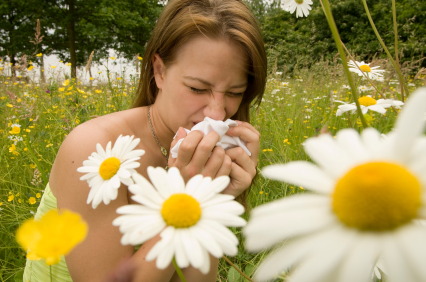Infertility is a common issue causing much concern for younger generation today. Ayurveda has certain set methods and principles for treatment of infertility.
Infertility is more than just the inability to conceive among couples. It also includes women who can conceive, but are unable to carry pregnancy to full term due to repeated mis-carriages.
Herbs for men: At present there are several medications advised for male infertility. Some of the well-known herbs that help in curing male infertility are jeevaka, kakoli, shatavari and ashwagandha, all of which,help in rectifying some of the above mentioned conditions. Kokilaksha and vidarikanda, specifically help in improving quantity of seminal fluid.
Ayurveda also considers treatment with Kapikacchu to increase sperm count. It is also considered to prevent male sterility and acts as nervine tonic.
Gokshura helps in increasing androgen levels and improves blood flow into the penis. The other herbs used to enhance male fertility levels in Ayurveda are Bala, and Salammisri. While Bala is used in cases of general debility and sexual inadequacy, Salammisri serves as a good nutritional supplement and aphrodisiac.
Herbs for women: For infertility among women, Ayurveda suggests herbs like iodhra, aloe vera, ashoka shatavari, as they help regulate hormone levels and improve fertility. Ayurvedic experts also sometimes recommend Ashwagandha, roasted in butter and boiled with cow’s milk and sugar, which is advised to women on certain days of her menstrual cycle.
Ashoka helps in stimulating endometrium and ovarian tissue. Lodhra increases reproductive hormone levels such as FSH (Follicular Stimulating Hormone) and LH (Luteinising Hormone). Shatavari brings in an oestrogenic effect on the female mammary gland and genital organs, and is used in treating infertility, threatened miscarriage, and leukorrhoea. Kumari (Aloe) is used in in-vitro production of oestradiol, while progesterone levels by ovarian cells may be considerably boosted.
Diet:
Foods rich in rice, wheat, milk, eggs, ghee, black gram, almonds, pumpkin seeds, pomegranate, seaweed, grapes, red clover blossoms, raspberry leaves, flaxseed oil and nourishing soups are thought to be best for boosting fertility.
Lifestyle modifications:
A warm gentle oil massage can be given in clockwise motion on the abdomen daily, followed by a warm shower. This will help provide additional support to female reproductive organs.
Cleansing the digestive system will help improve digestive functioning. This can be done months before attempting to conceive. Cleansing involves including light meals comprising seasoned vegetables, soups and fruits all through the day.
Incorporate meditation into daily routine at least once a day and establish regular daily routine including regular meal times and bed times. Yoga is an integral part of Ayurvedic daily routine, as it helps improve circulation. Relax and avoid factors contributing to stress, in order to improve fertility rates. (by Ayurvedictalk.com)
Infertility is more than just the inability to conceive among couples. It also includes women who can conceive, but are unable to carry pregnancy to full term due to repeated mis-carriages.
Male infertility
Although both men and women have equal role to play in child birth, the Ayurvedic concept of infertility in men focuses on abnormalities in sperm, penile disfunction, deficiency in seminal fluid, and issues pertaining to senility and old age. Male infertility may also occur due to various medical reasons, including presence of urinary diseases.Herbs for men: At present there are several medications advised for male infertility. Some of the well-known herbs that help in curing male infertility are jeevaka, kakoli, shatavari and ashwagandha, all of which,help in rectifying some of the above mentioned conditions. Kokilaksha and vidarikanda, specifically help in improving quantity of seminal fluid.
Ayurveda also considers treatment with Kapikacchu to increase sperm count. It is also considered to prevent male sterility and acts as nervine tonic.
Gokshura helps in increasing androgen levels and improves blood flow into the penis. The other herbs used to enhance male fertility levels in Ayurveda are Bala, and Salammisri. While Bala is used in cases of general debility and sexual inadequacy, Salammisri serves as a good nutritional supplement and aphrodisiac.
Female infertility
Ayurveda associates female infertility to issues such as tubular blocks, salpingitis, obesity, pelvic inflammatory diseases, uterine fibroids, obesity, and vaginitis.Herbs for women: For infertility among women, Ayurveda suggests herbs like iodhra, aloe vera, ashoka shatavari, as they help regulate hormone levels and improve fertility. Ayurvedic experts also sometimes recommend Ashwagandha, roasted in butter and boiled with cow’s milk and sugar, which is advised to women on certain days of her menstrual cycle.
Ashoka helps in stimulating endometrium and ovarian tissue. Lodhra increases reproductive hormone levels such as FSH (Follicular Stimulating Hormone) and LH (Luteinising Hormone). Shatavari brings in an oestrogenic effect on the female mammary gland and genital organs, and is used in treating infertility, threatened miscarriage, and leukorrhoea. Kumari (Aloe) is used in in-vitro production of oestradiol, while progesterone levels by ovarian cells may be considerably boosted.
Diet:
Foods rich in rice, wheat, milk, eggs, ghee, black gram, almonds, pumpkin seeds, pomegranate, seaweed, grapes, red clover blossoms, raspberry leaves, flaxseed oil and nourishing soups are thought to be best for boosting fertility.
Lifestyle modifications:
A warm gentle oil massage can be given in clockwise motion on the abdomen daily, followed by a warm shower. This will help provide additional support to female reproductive organs.
Cleansing the digestive system will help improve digestive functioning. This can be done months before attempting to conceive. Cleansing involves including light meals comprising seasoned vegetables, soups and fruits all through the day.
Incorporate meditation into daily routine at least once a day and establish regular daily routine including regular meal times and bed times. Yoga is an integral part of Ayurvedic daily routine, as it helps improve circulation. Relax and avoid factors contributing to stress, in order to improve fertility rates. (by Ayurvedictalk.com)










































